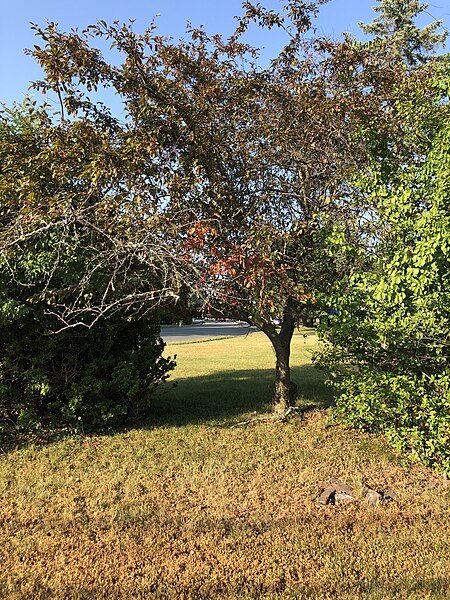Assessing Soil and Site Influences: Chronic vs. Acute Water Deficiency
Understanding the impact of water deficiency on plants is crucial for arborists. Chronic and acute water shortages can significantly affect plant health, but their symptoms and long-term effects differ.
Chronic Water Deficiency
Symptoms:
Leaf Scorch and Wilting: The edges of leaves turn brown and crispy, and leaves may wilt due to insufficient water.
Stunted Growth: Plants exhibit reduced growth rates, smaller leaves, and shorter internodes.
Leaf Drop: Premature leaf drop, especially in deciduous species, can signify prolonged water stress.
Color Changes: Leaves may turn a dull green, yellow, or even purple due to the stress and disruption in photosynthesis.
Long-Term Effects:
Reduced Vigor: Chronic water stress weakens the plant, making it more susceptible to diseases and pests.
Root System Alteration: The root system may become more extensive as the plant tries to access more water, but overall root health can deteriorate.
Decline in Health: Continued water stress leads to a gradual decline in overall plant health, potentially leading to death if conditions persist.
Reproductive Issues: Flowering and fruiting can be significantly reduced, affecting the plant's reproductive cycle.
Management Strategies for Chronic Water Deficiency:
Regular and Deep Watering: Implement a consistent watering schedule for deep soil penetration, encouraging deep root growth.
Mulching: Apply organic mulch around the base of the plant to conserve soil moisture and regulate soil temperature.
Soil Amendments: Incorporate organic matter into the soil to improve water retention and drainage.
Acute Water Deficiency
Symptoms:
Rapid Wilting: Plants wilt quickly, often within hours or days of acute water shortage.
Leaf Curling: Leaves may curl inwards as a means of conserving water.
Sunburn: Exposed, especially on the upper surfaces of leaves, can occur due to inadequate water to maintain normal cooling processes.
Rapid Leaf Desiccation: Unlike the gradual browning in chronic stress, leaves may desiccate and die quickly.
Long-Term Effects:
Sudden Plant Death: In extreme cases, acute water deficiency can lead to rapid plant death.
Increased Susceptibility to Secondary Stressors: Even if the plant survives, it may be weakened and more susceptible to diseases and pest infestations.
Irreversible Damage to Young Plants: Young plants or new growth can be permanently damaged, affecting future growth.
Root Damage: Rapid dehydration can harm the root tissues, affecting the plant's ability to uptake water even after normal conditions resume.
Management Strategies for Acute Water Deficiency:
Immediate Watering: Provide prompt and thorough watering to rehydrate the plant.
Shade Provision: Temporarily shade the plant from direct sunlight to reduce water loss and prevent sunburn.
Root Protection: Ensure the root zone is moist but not waterlogged to avoid root rot.
Diagnostic Tips:
For chronic water deficiency, look for gradual symptom development. Use a soil moisture meter to monitor soil dryness levels over time.
In cases of acute water deficiency, look for rapid symptom onset. Check if the soil is dry to a significant depth and observe if leaves show sudden wilting or curling.
Follow-Up Care:
Gradual Rehydration: Slowly reintroduce water to plants that have been stressed to avoid shock.
Nutritional Support: After stabilizing water levels, consider providing appropriate fertilization to support recovery.
Monitoring and Adjustment: Continuously monitor the plant's response and adjust care practices to ensure full recovery.
Conclusion
In summary, while chronic water deficiency is characterized by gradual symptom development and long-term decline in health, acute water deficiency manifests quickly. It can lead to rapid and severe damage. Understanding these differences, appropriate management strategies, diagnostic tips, and follow-up care are vital for effective diagnosis and management in arboricultural practices.
Additional Reading
Missouri Botanical Garden. (n.d.). Drought and Water Stress. Retrieved November 22, 2023, from https://www.missouribotanicalgarden.org/gardens-gardening/your-garden/help-for-the-home-gardener/advice-tips-resources/pests-and-problems/environmental/drought#:~:text=Symptoms%20and%20Diagnosis&text=Footprints%20in%20wilted%20grass%20persist,Plants%20may%20eventually%20die.

